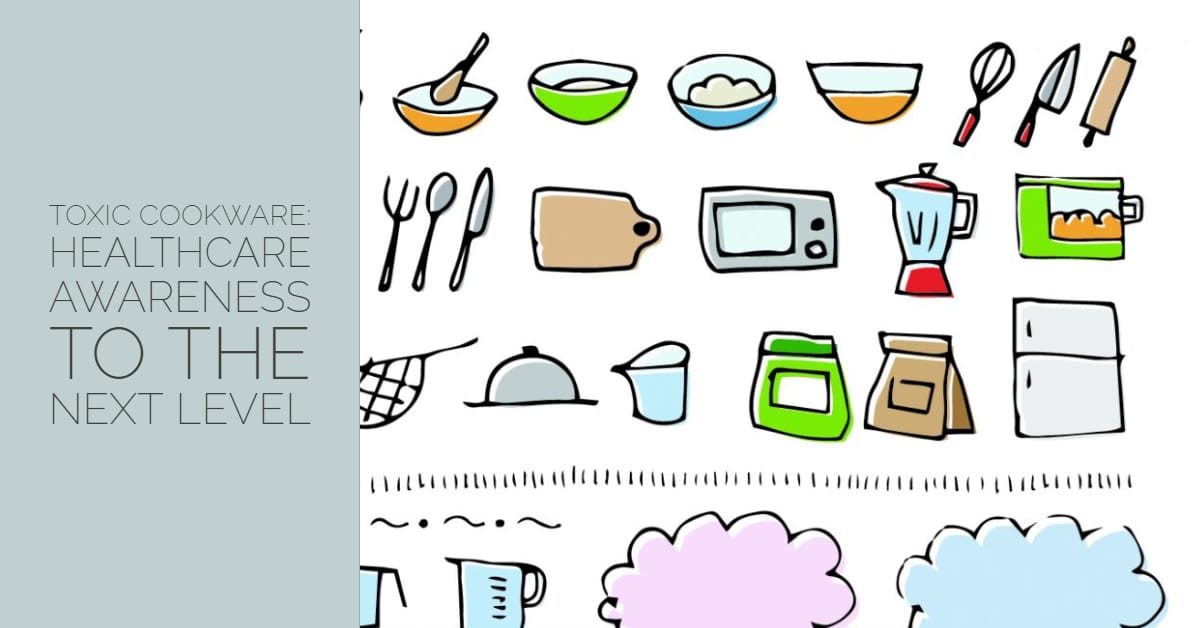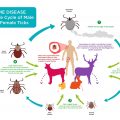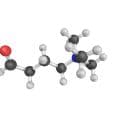Toxic cookware: healthcare awareness to the next level

Healthcare awareness: everything you need to know about toxic cookware
Toxic cookware is something I have eliminated from my household years ago because it can have many health consequences. What you eat is essential for good health, but did you know that what you cook it with, or eat on, can also have an effect? Maybe your pots and pans are quite expensive, so you assume it can’t contain any harmful ingredients, right? Unfortunately, the dangers of toxic cookware isn’t highlighted enough in mainstream media so many of us are none the wiser about the poison we’re letting seep into our bodies.
It’s essential that you equip yourself with the right information, and understand the consequences of using toxic pots and pans, as it can severely affect your health. In fact, there are studies that indicate toxic cookware can cause cancer. Is it really worth the risk?
Read on to find out how you can avoid the pitfalls of using toxic cookware
Look around your kitchen, in fact, look around your entire home. There are products that aren’t completely safe for us, yet we buy them because we’re unaware or it’s the cheaper option. Little do we realise that the pots and pans we use to lovingly cook our meals could be leaking out harmful carcinogens and entering into our bodies.
Nonstick cookware killers
The biggest offender in toxic cookware is undoubtedly nonstick pots and pans, which when heated up, release toxic fumes that seep into our food. The American Cancer Society stated that:
“Pefluorooanic has the potential to be a health concern because it can stay in the environment and in the human body for long periods of time. Studies have found that it is present worldwide at very low levels in just about everyone’s blood.”
In addition, several studies on lab animals have found that PFOA can cause a range of debilitating illnesses and affect growth, development and fertility. Nonstick cookware may appear cheaper and easier to clean but the cons far outweigh the benefits. Once heated the coating can break down and release nasty chemicals, including perfluorochemicals.
The biggest offenders in cookware are the ones coated in Teflon
The chemical substance Pefluorooanic (PFOA), also known as C-8, is the main component of Teflon.
This tough-wearing material was discovered by scientist Dr. Roy Plunkett, who was working for the US Company DuPont in the 1930s but only began being manufactured and approved for use in cookware by the FDA in 1962. It was revolutionary at the time – Teflon coated cookware was easy to cook with and simple to clean, just what Americans wanted post-war. It also helped that it was pretty affordable. It’s popularity soared and soon enough Teflon was being used for all sorts of products – food wrappers, fire retardant clothing, and fabric and rug protectors, to name a few.
Teflon cookware is releasing dangerous toxins when used on high heat
However, the bubble finally burst after the Environmental Working Group conducted a study that found Teflon pans released dangerous toxins when used on a high heat and that it could cause flu-like symptoms. DuPont had withheld important information regarding the health hazards connected to Teflon. By 2004 a survey conducted by the Centers for Disease Control (CDC) found that 98 percent of Americans had small quantities of PFOA in their blood.
If that wasn’t bad enough, reports found that DuPont had been secretly releasing iodine I-131, a known carcinogen, while operating at a nuclear plant in Washington. Lawsuits against DuPont flooded in after claimants argued that the exposure in their town had caused a series of illnesses such as leukaemia, thyroid, colon, and stomach cancer Another study found that two female workers at DuPont’s plant delivered children with birth defects after handling PFOAs.
As you can see something as seemingly small and irrelevant as a chemical component within a material, can have life-threatening consequences. And it’s not just the nonstick variety we need to avoid. Here are some other types of toxic cookware to stay away from…
Silicone cookware leaches out chemicals
This synthetic rubber cookware is made of bonded silicon and oxygen and although FDA approved I would still avoid it as there is not enough research to confirm it’s safety yet. There’s also a strong possibility that silicone cookware leaches out chemicals and contaminates food, and that’s not a risk I’m willing to take.
Aluminium cookware killers
Studies have indicated that the use of aluminium is linked to Alzheimer’s. Although there’s no concrete proof of this, there is concern that when using aluminium pots and pans to cook there’s a risk that some of it can dissolve into your food. This is more likely to happen with acidic ingredients like lemons, tomatoes and vinegar. A safer option is to pick cookware that has been anodized – this process prevents any toxic chemicals from implanting onto your food. However, it’s a more expensive option, which can turn some people off. There’s also the risk that if the coating is scratched or damaged then aluminium will get in contact with your food.
Plastic – BPA cookware killers
Plastic cookware is a no-go in my opinion. It’s extremely unsafe and carries many chemicals that can leave you feeling TOX-SICK! Studies have found that plastics containing BPA (Bisphenol A), such as water bottles and and tin can liners can enter into our bodies at alarmingly high quantities. In fact, higher amounts could be found in the “umbilical cord blood” of pregnant women who expose themselves to this harmful “estrogen-like substance”.
BPA cookware is highly toxic
BPA is so toxic that it has even been linked to diseases like breast cancer, infertility and diabetes. It can also be easily absorbed into the bloodstream through oral use.
Still think using your cheap and easy non-stick pan is okay?
Here are just some of the research-backed findings which show how it can affect your health:
Delay in child development
A UCLA study found that when unborn fetuses were exposed to PFOA they experienced developmental delays as toddlers and babies and were less likely to reach milestones early.
High cholesterol
A study conducted on 12,000 children living in Ohio and West Virginia found that those with the highest levels of the PFOA and PFOS were also more likely to have high levels of cholesterol.
Thyroid issues, inflammation and weak immune system
According to the EWG: “Perfluorochemicals are associated with abnormal thyroid hormone levels, liver inflammation, and weaker immune defence against disease.”
Cancer
Perhaps most shocking of all is that scientific research has linked cancer with exposure to PFOA.
Non-Toxic Cookware
At this point, you’re probably wondering – what can I cook with then? Fret not my dear, there are some great (even better, in my opinion) alternatives to toxic cookware. You may need to pay more attention to stop your food sticking to the bottom of the pan but in the long run your health will thank you for it.
Here are the healthy cookware alternatives that I would recommend:
Cast Iron cookware
Centuries ago people used non-toxic cookware like cast iron pans and even today some enjoy using cast iron cookware due to its durability and the way it enhances the flavours of whatever is cooked on it. This type of cookware is completely safe and non-toxic. It’s also easy to clean and can rival a non-stick pan, if you season your food properly. To stop your food sticking to the pan use it on a lower heat. As it retains heat so well you won’t need to put it on high anyway. It can also withstand high heats without being damaged.
Although it doesn’t contain any chemical, this safe cookware material does carry a lot of iron (in case you hadn’t guessed by its name!) This makes it especially beneficial for those suffering from iron deficiency as small amounts can seep into the food you’re cooking.
However, there are also some downsides to using cast iron.
Although it can emit iron onto your food, when exposed to a high amount it can be detrimental to health. Studies suggest that too much iron can lead to diseases like cancer. You can avoid this by simply not using it to slow cook or boil food, especially when using acidic ingredients as I mentioned above. You can also prevent iron leaching onto your food by using Enameled Cast iron Cookware, which contains a safe coating. To prevent food sticking try lubricating it with a high smoke point oil, like coconut oil.
Stainless Steel Cookware
Stainless steel cookware is a popular choice for non-toxic cookware. It’s easy to source, affordable and widely used. The composite of different metals means that it will only leach small amounts of nickel, chromium, titanium, and other metals. Unless you suffer from metal sensitivities, this could be a perfectly safe choice for cooking meals. However, as it is still a metal, I would advise against using it for 48-hour broths or slow cooking. A quick meal is fine!
It can also resist most corrosion and scratching so you don’t end up with metal in your food. However, when washing up, scrub them gently as it can still scratch. If the cooking surface becomes damaged from harsh scrubbing throw it out.
Stone cookware
Stone cookware can be used for a range of cooking, including boiling and simmering your food. It’s completely safe and non-toxic and is virtually nonstick – what’s not to love!
Ceramic cookware
Technological advances mean that ceramic cookware is fast becoming the popular choice for non-toxic cooking. To ensure that it’s completely safe I’d recommend buying ceramics manufactured in the US or Canada as studies found that ceramics manufactured in other countries, like China and Mexico, contained high amounts of lead.
Glass cookware
As well as being completely non-toxic, glass cookware is environmentally friendly and super-durable. I’d also recommend using glass containers to store food, rather than plastic ones.
Copper cookware
There is a slight grey area when it comes to using copper cookware. Although it’s much safer than nonstick materials, pure copper pots and pans could lead to an overconsumption of metals. If you have a copper deficiency or a digestive disorder that affects nutrient absorption then this option is perfectly fine. In fact, it’s probably healthier for you – just steer clear of older copper cookware, which usually contains a tin or nickel coating.
However, if like me, you are looking to cut out all metals from your system I would recommend avoiding this type of cookware – it’s better to be safe than sorry. Many cookware brands have been coating the outside of stainless steel pots and pans with copper recently as it’s great for conducting heat and the metal won’t seep into your food – this way you get the best of both worlds.
The final word on toxic cookware
Toxic cookware is rife and most households these days will have non-stick pans and other dangerous materials in their kitchen. Unbeknownst to them, every time it’s heated up, nasty chemicals leach onto their food and contribute to a range of health problems.
In this fast-paced, must-have-it-done-now world the nonstick pan is a dream come true – easy to cook with and quick to clean. Who could resist? A healthier and safer option, however, is to create your own nonstick surface on an iron or stainless steel pot using healthy oils, ghee or butter. Those extra few minutes could make a huge impact on you and your family’s future.
Don’t risk your health for a quick fix.
Empowering others via my anti-ageing wellness platform and holistic health books
I hope you liked this toxic cookware article. If you would like to learn more about my tips and tricks on how to live a toxin-free life or how I saved my hair from falling ensure to check out other pages of this anti-ageing wellness platform.
Or if you want to discover my no BS guides on how to regain your health, hair and life, ensure to check out my holistic wellness books on this link.
After a frustrating decade of battling several chronic illnesses, I became disillusioned with the medical system and decided to take my health into my own hands.
Now, through my books and wellness platform, I want to empower people around the world do the same and regain their health, hair, life and beauty!
Let me help you right now!
Receive YOUR Welcome Kit that includes a wide range of topics, from simple and easy healthy brain recipes to clean living, ditching toxic chemicals with loads of practical advice that you can implement immediately
.




